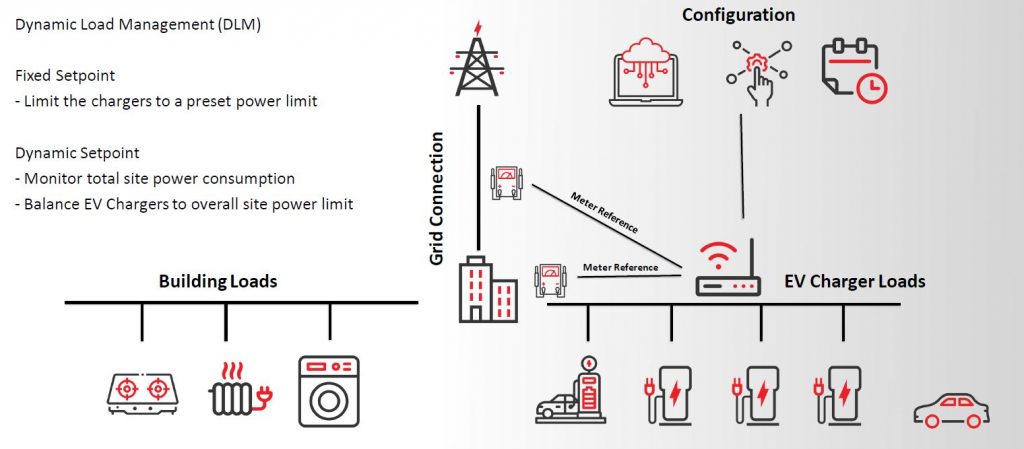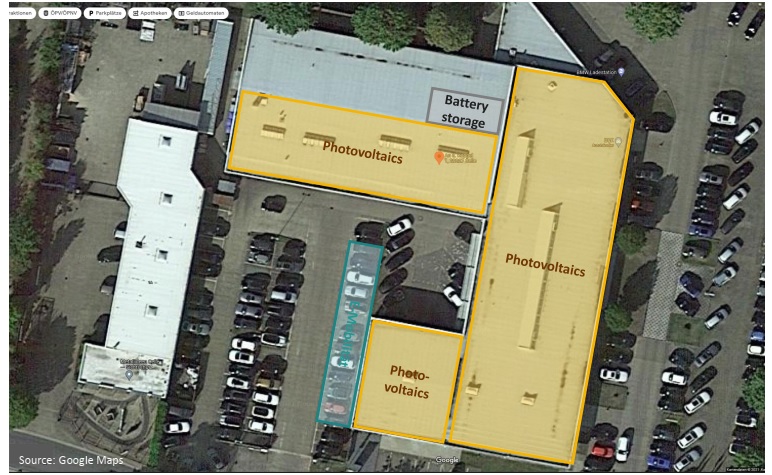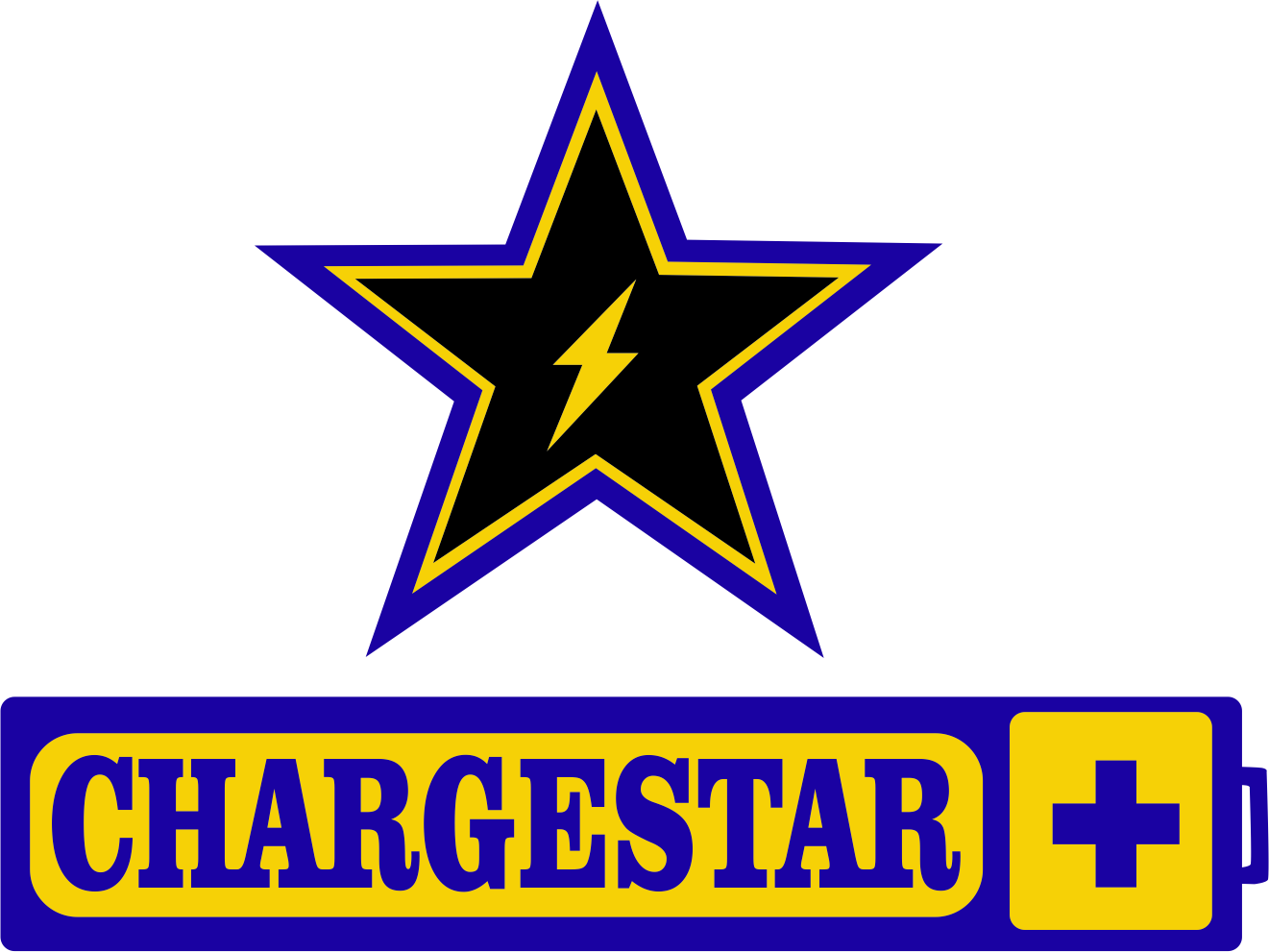Coneva Dynamic Load Management System
Coneva is an on-site appliance based dynamic load balancing system for electric vehicle charging stations. Coneva can manage mixed clusters of AC and DC charging stations that share the same power supply.
Coneva is developed by Coneva GmbH, a wholly owned subsidiary of SMA Solar Technology AG, the worlds leading manufacturer of solar inverters.

The purpose of a load management system is to avoid costly grid upgrades needed to facilitate electric vehicle charging. Coneva is designed to reduce the charging rate of electric vehicle charging stations when there is insufficient power to allow charging at the full rate. This can occur where there is a fixed limit on a building’s power supply and power usage varies during the day. Typically, power usage in commercial buildings goes up when the air conditioning is switched on in the morning and goes down when the air conditioning is switched off in the evening. Coneva monitors the building’s power usage and dials down the charging stations during the day so that the capacity of the building’s grid connection is not exceeded.
For example;
- 10 charging stations rated to 7 kW each. Total power requirement 70 kW.
- 6:00 am – 100 kW available – 10 cars charging – 7 kW each.
- 8:00 am – 60 kW available – 10 cars charging – 6 kW each.
- 10:00 am – 20 kW available – 10 chars charging – 2 kW each.
The power usage profile is reversed in multi residential and strata buildings where power consumption peaks in the morning and evening.
Coneva can also be used for dynamic load management of AC charging station clusters designed for fleet charging and high powered DC charging station clusters designed for rapid charging.
Power monitoring and network configuration
Power usage is monitored via a series of CT clamps and power analysers attached to both the building power supply and EV distribution board. The appliance has router capability and creates its own local area network. Charging stations and the other hardware components are connected to the appliance by ethernet cable. The appliance operates in stand alone mode and does not require an external internet connection for dynamic load balancing. However, the appliance can provide a VPN link to the remote Coneva server for remote configuration and reporting purposes. Coneva is compatible with a wide variety of smart meters and power analysers and components can be purchased locally.
Interoperability with OCPP network management systems
Coneva is interoperable with charging station network management systems that use the standard OCPP communications protocol. Coneva acts as a proxy for the remote OCPP server. Non load management communications between charging stations and the OCPP server are passed back and forth through the Coneva appliance. The remote network management system operates in tandem with Coneva to provide billing, reporting, remote management and other features.
Remote configuration and dashboard.
Coneva can be monitored from a web portal. This professional tool provides a graphic overview of the charging infrastructure and energy consumption across the site. Additionally, error messages from the charging points and any communication problems in the network are displayed to allow for quick troubleshooting. The dashboard shows the operating states in a high level of detail. With almost real-time control (approx. 3 seconds) it gives you an immediate insight into the operating status of the site and each individual charging point. Coneva’s Device Manager (remote management module) allows you to remotely manage the charging points with soft and hard resets and setting load management limits.
Scheduled Charging
Coneva provides for scheduled charging where operators may wish to reduce or prevent electric vehicle charging during periods when power is expensive.
Solar, battery and wind aware
Coneva is solar, battery and wind aware and can configured to manage loads so that the site operates in off-grid mode, pulling power from the grid only when needed or at off-peak periods when power is cheap. This ensures optimal use of solar, wind and battery storage which combined with orchestrated EV charging avoids capacity charges when the electricity transmission network is congested. The charging stations will operate using the lowest cost times to charge the vehicles. If the focus is on reducing CO2 emissions, a solar timetable which is based on the energy production from a photovoltaic system can also be used.

API architecture for BMS and other third party software
Coneva has a robust API designed to facilitate interoperability with third party systems such as building management systems and grid control systems. Coneva can respond to signals issued by a BMS or grid operator in situations where the BMS or grid operator wishes to reduce or shut down electric vehicle charging because of power outages or some other reason.
Compatible with most charging stations that comply with OCPP 1.6 and 2.0 smart charging protocols
Category | Manufacturer | Model |
AC/DC | ABB | Terra |
AC/DC | Circontrol | Evolve Smart, ENext Elite |
AC/DC | Delta | EIA, EVD |
AC | Keba | P30-X |
AC | Mennekes | Amtron, Amedio |
AC | SMA | Fully Compatible |
